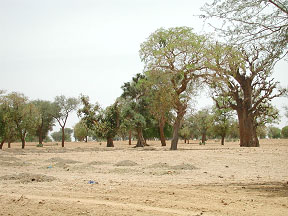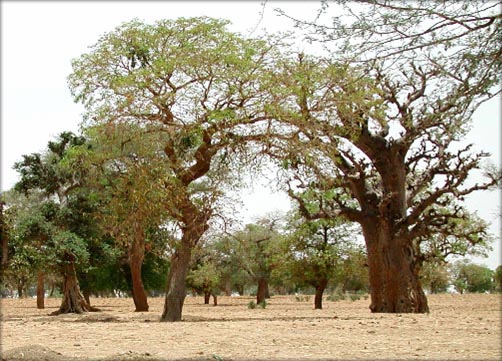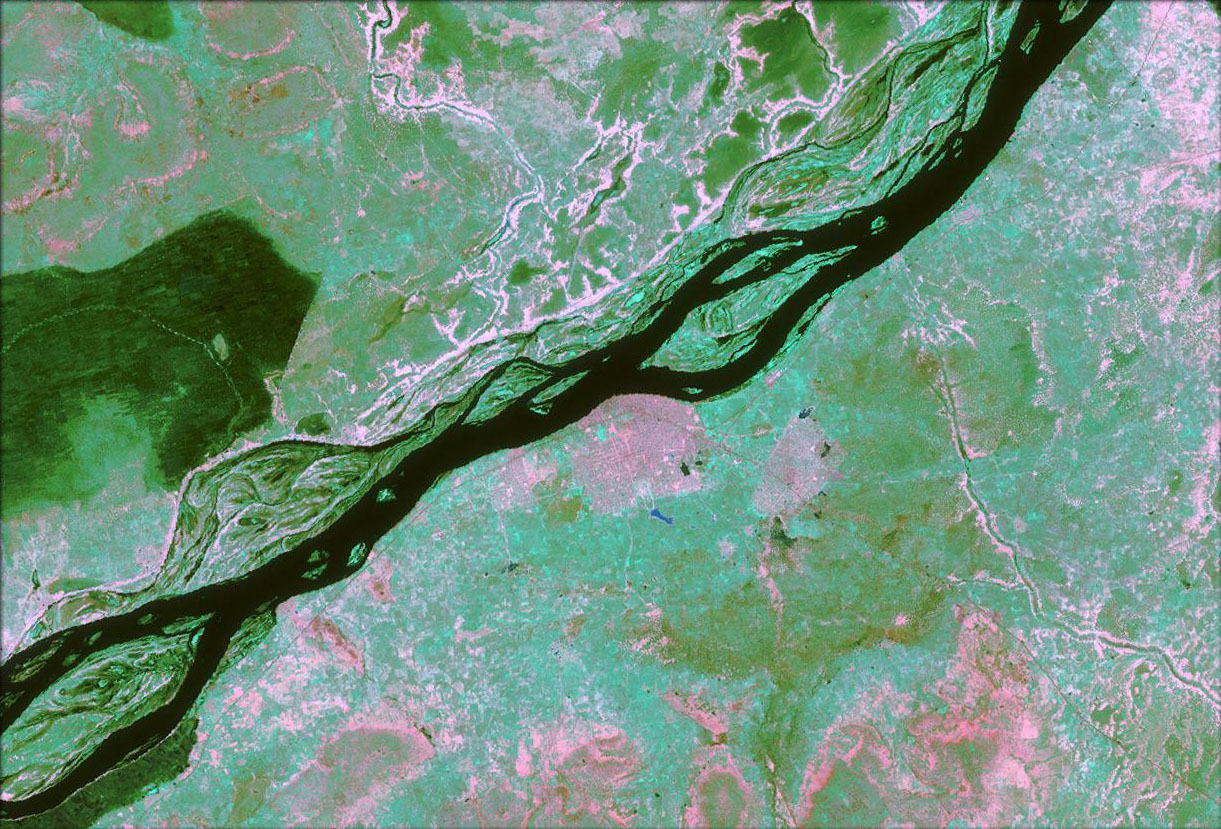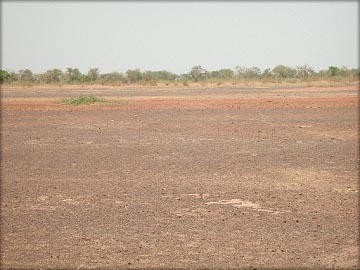West Africa Drylands Project
Ecosystems Approach to Restoring West Africa Drylands
The Sahel is a 700,000-km2 belt extending across Mauritania, Senegal, Mali, Burkina Faso, and Niger, containing over half of the total population of these countries. The area is characterized by a 9-month dry season, frequent droughts and abject poverty.
Sahelian Parklands
The project, in broad terms, aims to promote an ecosystems approach for sustainable management of the Parkland systems of the semi-arid lands of West Africa to improve human well-being and the environment.

Photo of Sahelian parkland in Mali
The project focuses on
the Sahelian Parklands, which are integrated tree-crop-livestock systems.
The sustainable use of these Parkland environments is vital for the future
welfare of over 40 million people. These rural populations are among the
poorest in the world. They will become increasingly marginalized unless
the ecosystem services that the Parklands provide are maintained.
Parkland trees, such as Shea butter and baobab provide an important source
of income, food, fodder, fuelwood, and medicine in these Parland areas,
thereby buffering households against risks such as drought and crop failures.
In this picture from Segou in Mali, farmers are applying manure in preparation
for the crop planting season

Photo of Segou in Mali, showing farmers applying manure in preparation
for the crop planting season.

Photo: Landsat image of Segou in Mali, with town in the middle
Dryland Degradation
But the Parklands are rapidly degrading over
vast areas due to unsustainable policies and land management practices,
causing negative impacts on both human well-being and the environment.
Once these areas were the main source of livelihood, now they are becoming
barren and unproductive.

In extreme cases such as this, over-use of fragile soil has led to hard-setting
and complete suppression of vegetation growth.

Copyright © 2008, West Africa Drylands Project. All rights reserved